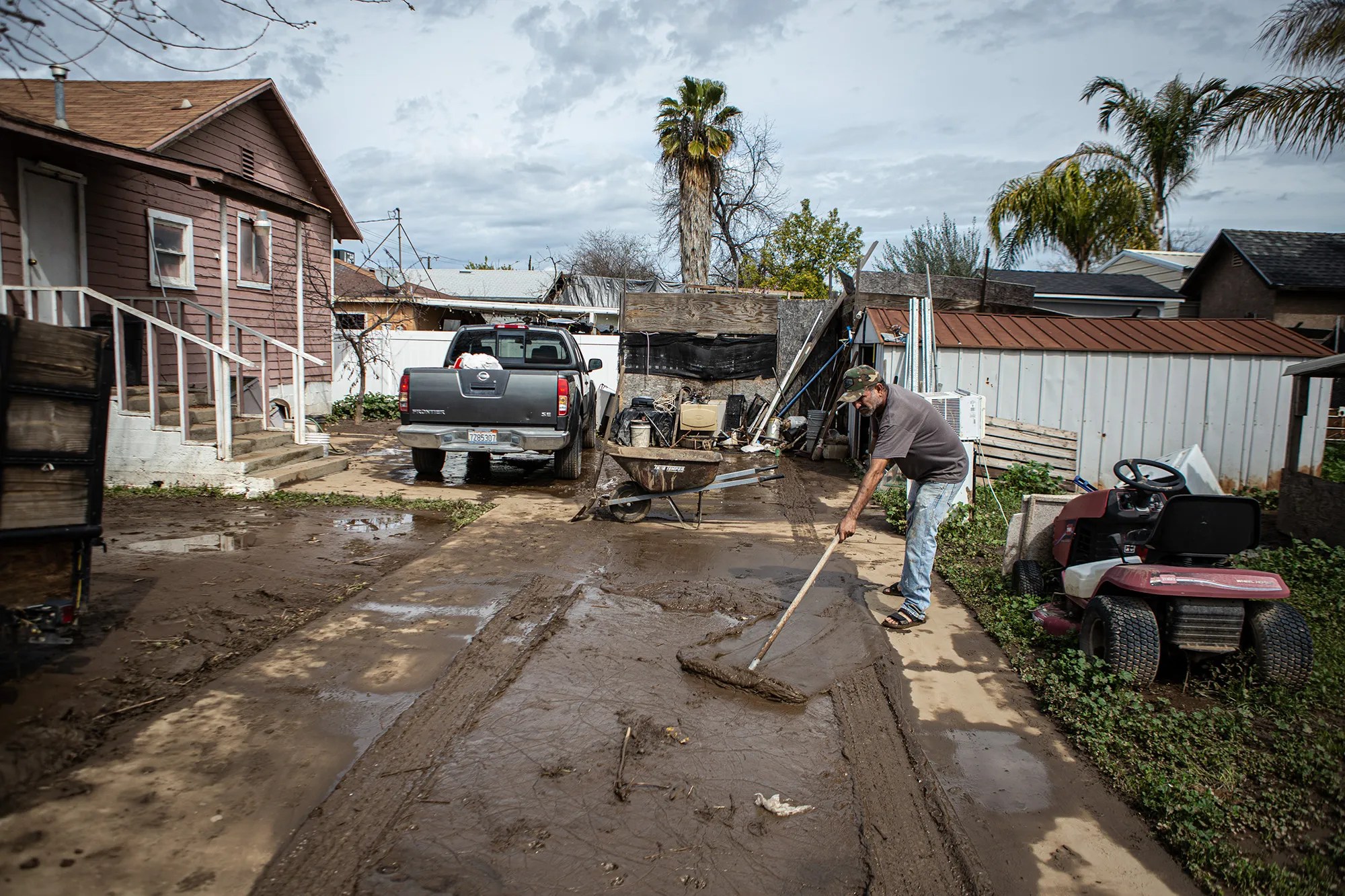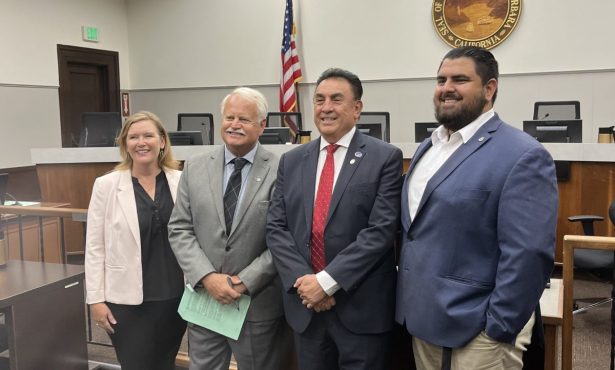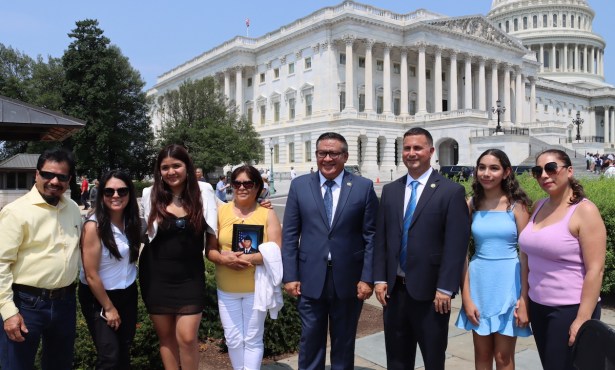Eight Months After Storms, California Disaster Relief Slowly Flows to Undocumented Workers Who Lost Homes, Income
In Santa Barbara County, More Than 2,000 People Have Received $2.8 Million in Assistance

The Santa Barbara Independent republishes stories from CalMatters.org on state and local issues impacting readers in Santa Barbara County.
Lea este artículo en español.
Undocumented Californians affected by winter storms and floods are slowly starting to receive money from a special relief program the state launched for them two months ago.
In June, Gov. Gavin Newsom’s office announced it plans to spend $95 million from the state’s Rapid Response Fund to help thousands of flood victims recover from storm damage and financial setbacks.The beneficiaries would be immigrants who don’t qualify for federal emergency assistance or state unemployment insurance because they are undocumented.
More than 20 nonprofits have contracts with the Department of Social Services to distribute the money. So far they have begun handing out nearly $18 million to about 12,000 residents — but it’s at an uneven pace.
About 4,000 residents in San Joaquin County are expected to receive a total of about $6 million, according to data from the state. Fewer people have received aid in other big counties. For instance, only a few hundred thousand dollars went to 415 households in Kern and San Mateo counties so far.
Some residents in smaller qualifying counties have not received any funds yet. The money will be available through May 31, 2024, or until the money runs out. Subtracting administrative expenses, nearly a quarter of the available aid has been distributed so far.
Although most recipients are undocumented people, who likely speak Spanish or an Indigenous language, some of the state’s information about the Storm Assistance for Immigrants program is in English and has not been translated into Spanish or any other languages.
Efrén Pérez, a political science professor at UCLA, said he’s puzzled that the state is not doing more aggressive canvassing and outreach, especially in Spanish.
“I think the most important question is why can’t we make this relatively easier?” Pérez said. “What are the barriers that make this the best that we can do? I think if I’m an agency that has money to hand out and I really want to … provide a public service, I think I would be trying to make something like this a little bit more streamlined.”
Pérez also questioned the state’s reliance on independent organizations to do outreach, saying it could result in varying results across counties and target populations.
“It’s good when you can partner with organizations,” Pérez said. “The challenge is when you decentralize it in that way, you basically are increasing the chances that there is no standardized approach across these organizations to get delivery of that info.”
Scott Murray, a spokesperson for the California Department of Social Services, said the nonprofit organizations are responsible for conducting outreach. He added that a Spanish version of a “Frequently Asked Questions” document has been provided to the nonprofits.
“It’s important to remember that the undocumented community can be fearful of accessing benefits and assistance through Government entities,” Murray told CalMatters in an email.
“Therefore, as trusted community messengers, the nonprofit organizations are conducting outreach to the undocumented community through their existing networks and through the local amplification of the existence of these recovery supports to eligible undocumented Californians.”
Who qualifies for storm damage aid?
The state’s Immigrant Storm Assistance Program, is only for undocumented residents living or working in the 25 counties that qualified for “direct assistance” from the Federal Emergency Management Agency (FEMA).
Qualifying families can receive up to $4,500 in state aid, depending on the number of qualifying adults and children in their household, while individuals can qualify for $1,500. The nonprofits contracting with the state interview applicants in person and provide them with preloaded debit cards or checks.
Many Californians harmed by the floods were working as farmworkers in rural or coastal communities. Not only did many lose weeks of work during the months of rain and floods, but others also lost their homes, vehicles and other property. One UC Merced study of Planada’s residents found nearly $20 million in damages to the Central Valley town of 4,000.

About 88% of California’s farmworkers speak Spanish at home and almost 8% speak an Indigenous language rather than Spanish at home, according to data from the UC Merced Community and Labor Center.
Like most California state agency websites, the social services landing page for the storm assistance program has a Google Translate tool in the upper right corner that can translate the webpage into more than 100 languages, including Spanish.
However the department has not posted translated versions of some key program documents linked on the webpage, including the list of service providers and the contact people, email addresses and phone numbers of the nonprofit organizations distributing the immigrant disaster aid.
The website launched in June, but its main page says “Translated versions will be posted soon.”
Also the Google Translate tool embedded on the state’s website cannot translate PDFs linked to that page. Some information on those PDFs — such as the main state hotline number and the community organizations assigned to each eligible county — is included on another page that can be translated, however.

This isn’t the first time the state provided information only in English about a program to help residents who likely speak or read a different language.
In 2020 advocates threatened to sue the Department of Social Services because of gaps in the Employment Development Department’s language accommodations for unemployment insurance. After the Legal Aid Foundation of Los Angeles filed a complaint alleging the state was violating federal and state anti-discrimination mandates, the employment department in 2022 announced plans to expand its language support for the more than 7 million Californians who speak languages other than English.
California nonprofits help hard-to-reach communities
Jose Rodriguez, CEO of the Stockton-based nonprofit El Concilio, said his staff raised concerns about the lack of Spanish translations on the storm assistance website with state officials.
But El Concilio didn’t struggle with outreach, Rodriguez said, because it relies on deep community roots from providing such services as immigration legal assistance and HeadStart to migrant families throughout the county. It also had recently distributed COVID-19 relief and rental assistance funds, he said.
The vast majority of the more than $6 million in aid heading to San Joaquin County is going through El Concilio. More than 2,000 residents – most of whom lost wages due to storms and flooding — have received funds, and another 2,000 are on a waitlist to receive funds.
The Binational Center for the Development of Oaxacan Indigenous Communities, a nonprofit in the Central Valley, has distributed more than $1.3 million to nearly 1,000 applicants from Indigenous Mexican communities who live in Madera and Fresno counties.
Its executive director, Sarait Martinez, said the lack of translated materials on the state’s program website might not matter, because few members of the communities her organization serves visit the state’s website for assistance.
“The reality is that if we don’t do this work, then our community does not get the support,” Martinez said. “It is definitely helping folks. Work started late this season. People needed the funds.”
Rodriguez said he hopes to request more money from the state in the future – if there is enough funds. He said he was unsure why the state allocated just $95 million for the program.
“The need is greater,” Rodriguez said.
People applying for the Storm Assistance for Immigrants program can call 866-724-2023 or contact one of the providers assigned to their county on this list.




You must be logged in to post a comment.